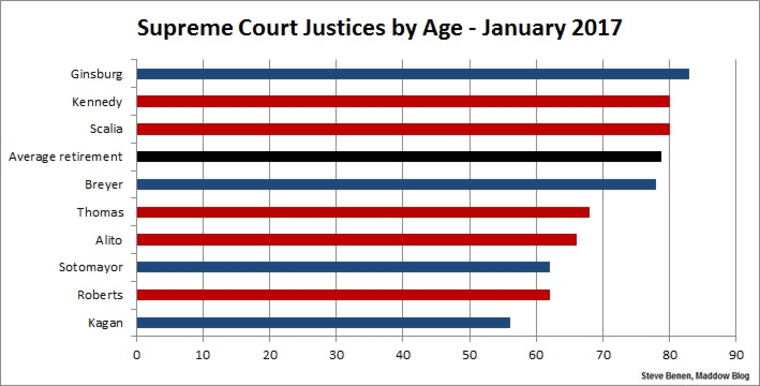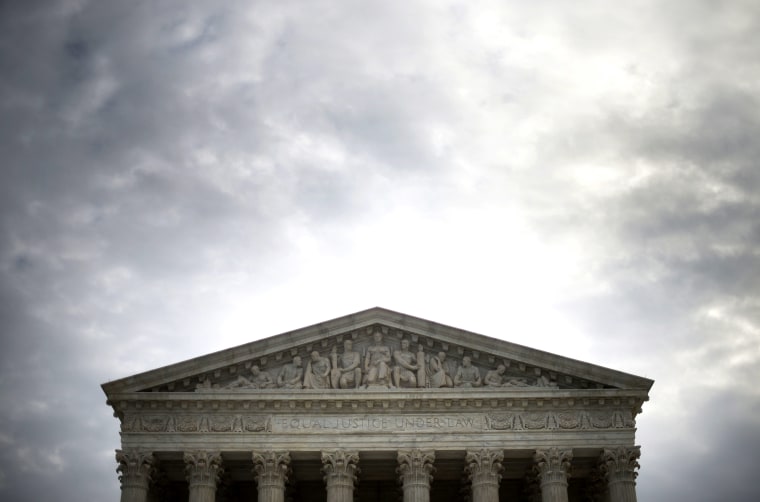In October, a voter in Iowa asked Ted Cruz about the future of the Supreme Court. The Texas Republican had an answer at the ready.
"One more liberal justice and our right to keep and bear arms is taken away from us by an activist court," Cruz said. "One more liberal justice and they begin sandblasting and bulldozing veterans memorials throughout this country. One more liberal justice and we lose our sovereignty to the United Nations and the World Court."
Substantively, the remarks were ridiculous, but as we talked about at the time, they were nevertheless a reminder of the significance of the high court as a 2016 campaign issue. MSNBC's Irin Carmon added that Republicans, arguably more than Democrats, have acted as if the Supreme Court itself is "essentially on the ballot."
I think the point about the partisan imbalance is true, though I also believe that's starting to change. Hillary Clinton has a new op-ed in the Boston Globe this morning, emphasizing the importance of the high court in this year's election.
On Election Day, three of the current justices will be over 80 years old, which is past the court's average retirement age. The next president could easily appoint more than one justice. That makes this a make-or-break moment -- for the court and our country. As president (and a lawyer and former law professor), I'll appoint justices who will protect the constitutional principles of liberty and equality for all, regardless of race, gender, sexual orientation or political viewpoint; make sure the scales of justice aren't tipped away from individuals toward corporations and special interests; and protect citizens' right to vote, rather than billionaires' right to buy elections.
To be sure, the piece didn't break new ground, so much as it summarized why the court and its future is of such critical consequence.
What matters, though, is the fact that the op-ed exists. With the Iowa caucuses and New Hampshire primaries drawing closer, Clinton has a lot of options on which issues to emphasize. As of today, the Democratic frontrunner is putting the Supreme Court up front and center.
And she's right to do so. Let's turn again to this chart I put together in May.

As we discussed at the time, if we assume that the current court does not change for the remainder of the Obama presidency – and really, no one can even say that for sure – three justices will be at least 80 by Inauguration Day 2017. Justice Ruth Bader Ginsburg will be 83. (In the above chart, blue lines refer to justices appointed by Democratic presidents; red lines refer to justices appointed by Republican presidents.)
This is no small detail: as a recent Bloomberg Politics piece noted, “The average retirement age for a U.S. Supreme Court justice is 78.7, a 2006 study in the Harvard Journal of Law and Public Policy found.”
The day the next president takes office, three sitting justices will already be well past this average, while a fourth will be very close behind. (Justice Stephen Breyer will be 78.2 years old on the next Inauguration Day.)
Given the circumstances, it’s hard not to notice the fact that the next president will have an extraordinary opportunity to shape the court’s future and quite possibly much of American public life for a generation. Is it any wonder why Clinton is reminding voters about the issue?
